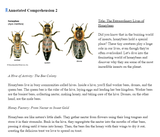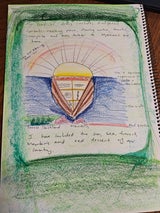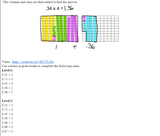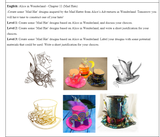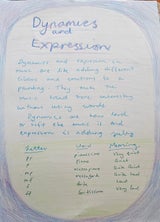Year 6 Term 3 Lesson Package
Roman Art (TheArts/HASS)
Australian Government (HASS/Mathematics)
Acoustics (Music/STEAM/Design and Technology)
-These step by step, day by day lesson plans are designed for homeschool families and Waldorf teachers. Each unit of work has been created with the students' developmental ages and stages in mind.
-This package includes a main lesson, numeracy and literacy lessons, and it includes all activities, songs, versus, workbook examples and printouts for 10 weeks per term.
-These units follow a patented 'Modern Waldorf' approach. They combine beautiful and natural elements of Rudolf Steiner's philosophies, with engaging activities based on the Australian Curriculum.
-Many lessons have 3 levels of difficulty to choose from.
Main Lesson 1
Roman Art
- Roman art and practises across a timeline
- Techniques and processes
- Art conventions and their contexts (social, cultural, and historical)
- Explore viewpoints, ideas and symbol systems
- Test and innovate with materials
Main Lesson 2
Australian Government
- The political development of Australia as a nation: 1900s onwards
- The levels of Government including their roles and responsibilities
- Voting
- Our laws and legal systems
- Global citizenship
Main Lesson 3
Acoustics
- Aural skills
- Dynamics and expression
- The elements of music
- Types of instruments and how they work
- Explore sound and how it works
- Hearing and parts of the ear
- How voices work
- Design and create instruments from found objects
- Create, perform and record compositions
English
Reading
- Annotated comprehension on topics of interest
- Text comparisons
- Analysing language features and text purposes
- Analyse the author’s voice
Spelling
- Adding –ion to base word; predictable changes in consonants
- Affixes: base word plus prefix and base word plus suffixes
Handwriting
- Year 6 Modern Cursive
Grammar
- Vocabulary building
Mathematics
Numbers and Algebra
- Multiply decimals by whole numbers
- Divide decimals Multiply decimals by powers of 10
- Equivalent fractions, decimals and percentages
- Order of operations
Measurement and Geometry
- Interpret and use timetables
Statistics and Probability
- Data displays
- Interpreting data
Please try a sample before purchasing, as there are no refunds post sale


